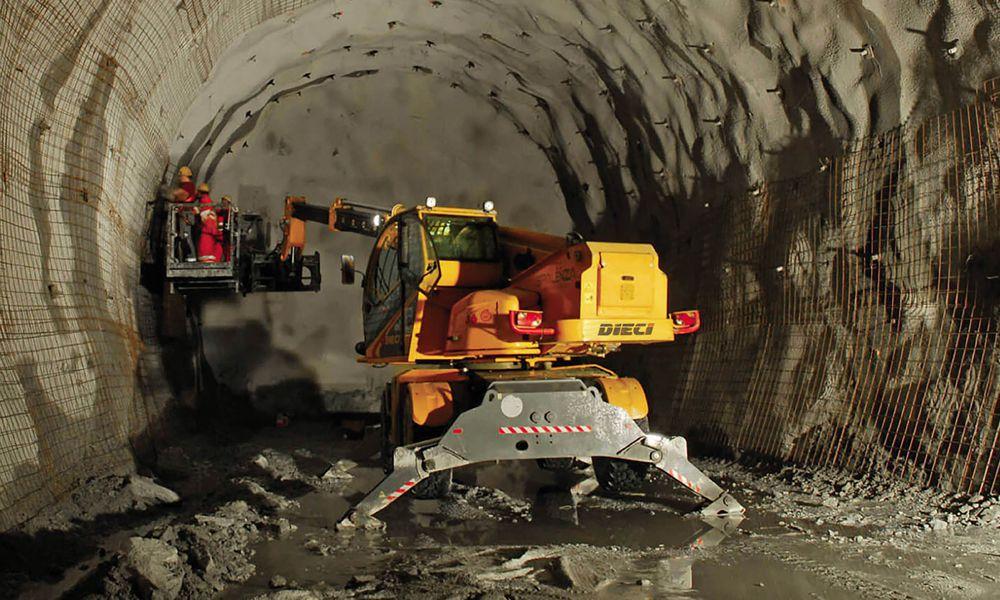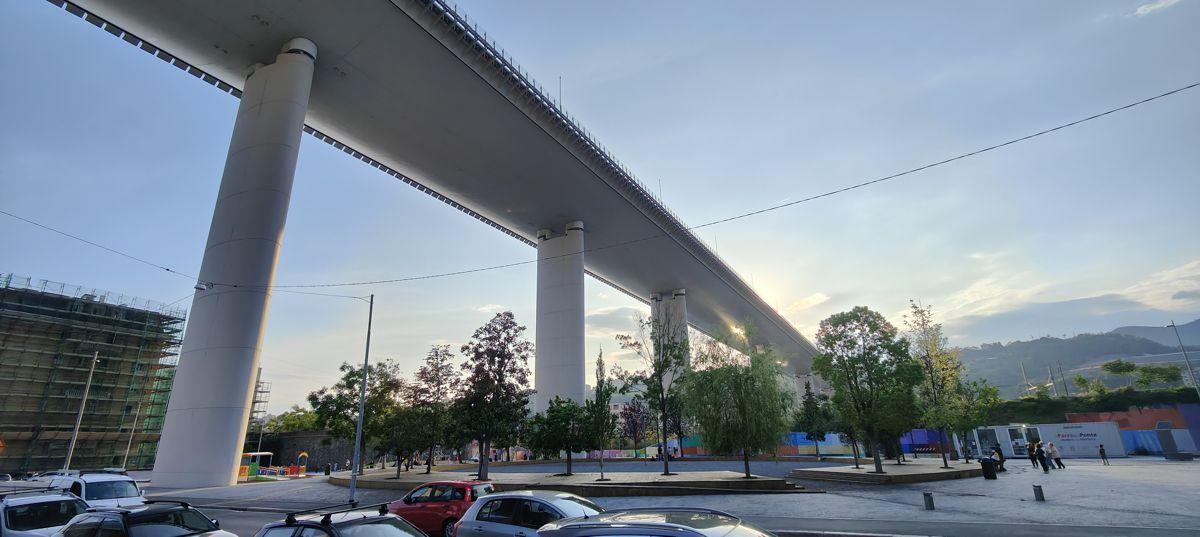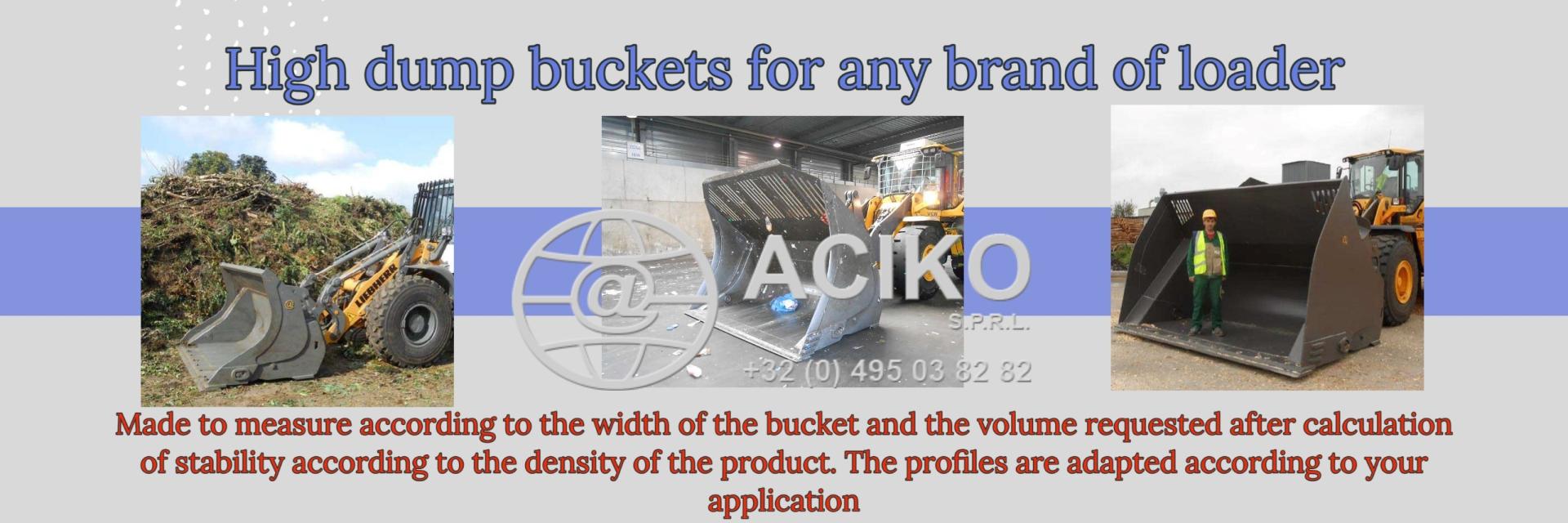Italian Concrete Industry gearing up for Infrastructure Investment Boom
 17/04/24-FR-English-NL-footer
17/04/24-FR-English-NL-footer
L’industrie italienne du béton se prépare à un boom des investissements dans les infrastructures

 Construction of the Brenner Base Tunnel. Source: Jacquesbotha, CC BY-SA 4.0 via Wikimedia Commons.-The new San Giorgio Bridge in Genoa. Source: Al*from*Lig, CC BY-SA 4.0 via Wikimedia Commons
Construction of the Brenner Base Tunnel. Source: Jacquesbotha, CC BY-SA 4.0 via Wikimedia Commons.-The new San Giorgio Bridge in Genoa. Source: Al*from*Lig, CC BY-SA 4.0 via Wikimedia Commons
Alors que l'Italie connaît une augmentation des investissements dans les infrastructures, le GIC 2024, du 18 au 20 avril, sera une plate-forme cruciale permettant aux acteurs nationaux italiens et internationaux de se connecter et de capitaliser sur cette opportunité en or pour l'industrie du béton de se développer et de contribuer au développement d'une économie moderne et réseau de transport durable.
Le paysage infrastructurel italien connaît une transformation majeure. Après des années de sous-investissement, le pays connaît désormais un afflux important de financements publics et privés visant à moderniser son réseau de transport. Les projections indiquent une augmentation de 2,6 % des dépenses d’infrastructure italiennes sur la période 2021-2026 et un taux de croissance annuel soutenu de 1,7 % jusqu’en 2031 – des chiffres bien supérieurs à la moyenne de la zone euro. Cette augmentation des projets d’infrastructures qui en résulte représente une opportunité en or pour l’industrie du béton, qui est sur le point de jouer un rôle central dans la construction d’une Italie plus résiliente et plus à l’épreuve du temps.
"Les prochaines années seront un moment déterminant pour le secteur italien du béton", déclare Fabio Potestà, directeur de Mediapoint & Exhibitions, la société organisatrice du GIC, le plus grand salon européen dédié au béton en 2024. "Avec des investissements importants prévus dans les autoroutes, les chemins de fer, ponts, tunnels et viaducs, le GIC 2024 fournira une plate-forme cruciale permettant aux acteurs de l'industrie de se connecter, de présenter leurs dernières innovations et de capitaliser sur ce potentiel de croissance passionnant.
Le besoin urgent de moderniser les infrastructures vieillissantes de l'Italie a été mis en évidence par l'effondrement largement rapporté du pont Morandi à Gênes en 2018. La tragédie a mis en évidence à quel point de nombreuses infrastructures clés du pays, construites pendant le boom de la construction d'après-guerre, sont en train d'atteindre la fin de leur durée de vie et nécessitent une attention immédiate.
Deux ans plus tard, en pleine pandémie mondiale, l’ouverture du pont Morandi, le nouveau pont San Giorgio, est devenue un symbole de l’importance des investissements dans les infrastructures, non seulement pour la sécurité publique, mais aussi comme catalyseur de la relance économique. Les hommes politiques ont clairement répondu à cet appel et ont manifestement donné la priorité au développement et à l’entretien des infrastructures, les positionnant comme la pierre angulaire de la stratégie nationale italienne pour la reprise post-pandémique et la résilience future.
L'engagement du gouvernement italien s'est concrétisé sous la forme du Plan national pour la reprise et la résilience (NRRP), qui a été formellement approuvé par l'UE en juillet 2021 et prévoit un financement de 23,74 milliards d'euros de la Facilité pour la reprise et la résilience (FRR) de l'UE, spécifiquement pour le création d’un réseau routier, ferroviaire, portuaire et aéroportuaire plus moderne et plus durable.
Parmi les initiatives importantes figurent le projet de modernisation de l'autoroute ionienne de 364 km (également connue sous le nom de SS-106), le chemin de fer à grande vitesse Naples-Bari de 200 km, le Terzo Valico dei Giovi (le chemin de fer à grande vitesse Gênes-Milan de 53 km) et le Le tunnel de base du Brenner (BBT) de 67 km entre Fortezza en Italie et Innsbruck en Autriche, qui constituera la plus longue liaison ferroviaire souterraine du monde une fois achevé.
Avec un délai strict pour finaliser le financement des projets du FRR d’ici fin 2026, l’ensemble de la chaîne d’approvisionnement de la construction se mobilise pour garantir sa préparation. En outre, cette dynamique positive sur les marchés italiens des équipements et matériaux de construction devrait se poursuivre jusqu'en 2031, alors que les projets atteignent leur phase finale.
Des propositions d’investissement privé international attractives
Dans le même temps, le secteur italien des infrastructures suscite également un intérêt étranger important, alimenté par la position stratégique de l’Italie au sein de la zone euro et par la possibilité de combler les lacunes existantes en matière d’infrastructures critiques. 71 % des entreprises internationales, des institutions financières et des fonds d'infrastructure interrogés dans le cadre du Baromètre EY des infrastructures 2023 ont révélé qu'ils ont investi ou financé des projets d'infrastructure italiens au cours des quatre dernières années, soulignant l'immense potentiel du marché italien pour les entreprises internationales et nationales. joueurs.
Compte tenu du vaste réseau italien de ponts, viaducs et tunnels vieillissants, où les coûts d'entretien dépassent souvent la viabilité économique des réparations, la démolition et le recyclage des structures en béton seront également un sujet crucial au GIC 2024. Les exposants et les conférenciers exploreront le développement durable. des solutions pour une démolition et un recyclage responsables des matériaux, promouvant une économie plus circulaire au sein du secteur de la construction.
Se déroulant à Plaisance, en Italie, du 18 au 20 avril, le GIC 2024 devrait dépasser les 234 exposants et les 5 000 visiteurs de l'édition 2022, encore impactée par le COVID-19. L’événement de cette année devrait attirer un nombre record de participants, notamment de l’extérieur de l’Italie.
GIC 2024 est parrainé par FEDERBETON (la fédération italienne des fabricants de ciment et de béton), ASSOBETON (l'association professionnelle nationale italienne des industries produisant des produits, composants et structures en béton), ATECAP (l'association technique et économique italienne du béton prêt à l'emploi), et près de 60 autres associations représentant divers aspects de l'industrie du béton, de l'extraction des matières premières au recyclage.
Alors que le secteur des infrastructures italien est à l’aube d’une transformation significative, le GIC 2024 constitue une plateforme vitale permettant à l’industrie du béton de se connecter, d’innover et de faire avancer le développement des infrastructures du pays. L’avenir des infrastructures italiennes se construit, et le béton en est au cœur.
NJC.© Info GIC
-----------------------------------------------------------------------------------------------------------------
 17/04/24-English
17/04/24-English
Italian Concrete Industry gearing up for Infrastructure Investment Boom

 Construction of the Brenner Base Tunnel. Source: Jacquesbotha, CC BY-SA 4.0 via Wikimedia Commons.-The new San Giorgio Bridge in Genoa. Source: Al*from*Lig, CC BY-SA 4.0 via Wikimedia Commons
Construction of the Brenner Base Tunnel. Source: Jacquesbotha, CC BY-SA 4.0 via Wikimedia Commons.-The new San Giorgio Bridge in Genoa. Source: Al*from*Lig, CC BY-SA 4.0 via Wikimedia Commons
As Italy experiences a surge in infrastructure investment, GIC 2024 18-20th April will be a crucial platform for both domestic Italian and international players to connect and capitalise on this golden opportunity for the concrete industry to grow and contribute to the development of a modern and sustainable transport network.
Italy’s infrastructure landscape is undergoing a major transformation. After years of underinvestment, the country is now experiencing an influx of substantial public and private funding aimed at modernising its transportation network. Projections indicate a 2.6% increase in Italian infrastructure expenditure over the 2021-2026 period and a sustained annual growth rate of 1.7% through to 2031 – figures well above the Eurozone average. This resulting surge in infrastructure projects presents a golden opportunity for the concrete industry, which is poised to play a pivotal role in building a more resilient and future-proof Italy.
“The next few years will be a defining moment for the Italian concrete sector,” says Fabio Potestà, director of Mediapoint & Exhibitions, the company organising GIC, Europe’s largest dedicated concrete tradeshow in 2024. “With significant investments planned for highways, railways, bridges, tunnels, and viaducts, GIC 2024 will provide a crucial platform for industry players to connect, showcase their latest innovations, and capitalise on this exciting growth potential.”
The urgent need to modernise Italy’s ageing infrastructure was brought sharply into focus by the widely reported collapse of the Morandi Bridge in Genoa in 2018. The tragedy highlighted how many of the country’s key infrastructure assets, built during the post-war construction boom, are reaching the end of their lifespan and require immediate attention.
Two years later, amid the global pandemic, the opening of the Morandi Bridge’s replacement, the new San Giorgio Bridge, became a symbol of the importance of infrastructure investment not only for public safety but also as a catalyst for economic revival. Politicians clearly heeded this call and have demonstrably prioritised infrastructure development and maintenance, positioning it as a cornerstone of Italy’s national strategy for post-pandemic recovery and future resilience.
The Italian government’s commitment materialised in the form of Italy’s National Recovery and Resilience Plan (NRRP), which was formally approved by the EU in July 2021 and earmarks €23.74 billion in funding from the EU’s Recovery and Resilience Facility (RRF), specifically for the creation of a more modern and sustainable network of roads, railways, ports, and airports.
Significant initiatives include the 364 km Ionian Highway (also known as the SS-106) upgrade project, the 200 km Naples-Bari high-speed railway, Terzo Valico dei Giovi (the 53 km Genoa-Milan high-speed railway), and the 67 km Brenner Base Tunnel (BBT) between Fortezza in Italy and Innsbruck in Austria, which will be the world’s longest underground railway connection upon completion.
With a strict deadline to finalise the RRF financing of projects by the end of 2026, the entire construction supply chain is mobilising to ensure readiness. Furthermore, this positive momentum in the Italian construction equipment and materials markets is expected to continue until 2031, as projects reach their final stages.
Attractive international private investment propositions
At the same time, the Italian infrastructure sector is also attracting significant foreign interest, fuelled by Italy’s strategic position within the Eurozone and the opportunity to address existing critical infrastructure gaps. 71% of international companies, financial institutions, and infrastructure funds surveyed in the 2023 EY Infrastructure Barometer revealed that they have invested or financed Italian infrastructure projects over the past four years, underscoring the immense potential in the Italian market for international companies as well as domestic players.
Given Italy’s vast network of aging bridges, viaducts, and tunnels, where maintenance costs often outweigh the economic viability of repairs, the demolition and recycling of concrete structures will also be a crucial topic at GIC 2024. Both exhibitors and conference speakers will be exploring sustainable solutions for responsible demolition and material recycling, promoting a more circular economy within the construction industry.
Taking place in Piacenza, Italy, from 18-20th April, GIC 2024 is set to surpass the 234 exhibitors and 5,000 visitors at the 2022 edition, which was still impacted by COVID-19. This year’s event is anticipated to draw a record number of participants, particularly from outside Italy.
GIC 2024 is sponsored by FEDERBETON (the Italian federation of cement and concrete manufacturers), ASSOBETON (the Italian national trade association of industries producing concrete products, components and structures), ATECAP (the Italian technical and economic association of ready-mixed concrete), and almost 60 other associations representing various aspects of the concrete industry, from raw material extraction to recycling.
With Italy’s infrastructure sector on the cusp of a significant transformation, GIC 2024 stands as a vital hub for the concrete industry to connect, innovate, and propel the nation’s infrastructure development forward. The future of Italian infrastructure is being built, and concrete is at the heart of it.
NJC.© Info GIC
------------------------------------------------------------------------------------------------------------------
 17/04/24-NL
17/04/24-NL
Italiaanse betonindustrie maakt zich op voor investeringsgolf in infrastructuur

 Construction of the Brenner Base Tunnel. Source: Jacquesbotha, CC BY-SA 4.0 via Wikimedia Commons.-The new San Giorgio Bridge in Genoa. Source: Al*from*Lig, CC BY-SA 4.0 via Wikimedia Commons.
Construction of the Brenner Base Tunnel. Source: Jacquesbotha, CC BY-SA 4.0 via Wikimedia Commons.-The new San Giorgio Bridge in Genoa. Source: Al*from*Lig, CC BY-SA 4.0 via Wikimedia Commons.
Nu Italië een sterke stijging van de infrastructuurinvesteringen ervaart, zal GIC 2024 van 18 tot 20 april een cruciaal platform zijn voor zowel binnenlandse Italiaanse als internationale spelers om verbinding te maken en te profiteren van deze gouden kans voor de betonindustrie om te groeien en bij te dragen aan de ontwikkeling van een moderne en duurzaam transportnetwerk.
Het Italiaanse infrastructuurlandschap ondergaat een grote transformatie. Na jaren van onderinvestering ervaart het land nu een toestroom van substantiële publieke en private financiering gericht op het moderniseren van zijn transportnetwerk. Projecties duiden op een stijging van 2,6% van de Italiaanse infrastructuuruitgaven in de periode 2021-2026 en een aanhoudend jaarlijks groeipercentage van 1,7% tot 2031 – cijfers ruim boven het gemiddelde van de eurozone. Deze resulterende stijging van het aantal infrastructuurprojecten biedt een gouden kans voor de betonindustrie, die klaar staat om een cruciale rol te spelen bij het opbouwen van een veerkrachtiger en toekomstbestendig Italië.
“De komende jaren zullen een bepalend moment zijn voor de Italiaanse betonsector”, zegt Fabio Potestà, directeur van Mediapoint & Exhibitions, het bedrijf dat GIC organiseert, Europa’s grootste speciale betonbeurs in 2024. “Met aanzienlijke investeringen gepland voor snelwegen, spoorwegen, bruggen, tunnels en viaducten zal GIC 2024 een cruciaal platform bieden voor spelers uit de industrie om verbinding te maken, hun nieuwste innovaties te presenteren en te profiteren van dit opwindende groeipotentieel.”
De dringende noodzaak om de verouderende infrastructuur van Italië te moderniseren werd scherp onder de aandacht gebracht door de breed gerapporteerde ineenstorting van de Morandi-brug in Genua in 2018. De tragedie benadrukte hoe veel van de belangrijkste infrastructuurvoorzieningen van het land, gebouwd tijdens de naoorlogse bouwhausse, hun grenzen bereiken. het einde van hun levensduur zijn en onmiddellijke aandacht vereisen.
Twee jaar later, te midden van de wereldwijde pandemie, werd de opening van de vervanger van de Morandi-brug, de nieuwe San Giorgio-brug, een symbool van het belang van investeringen in infrastructuur, niet alleen voor de openbare veiligheid, maar ook als katalysator voor economische heropleving. Politici hebben duidelijk gehoor gegeven aan deze oproep en hebben aantoonbaar prioriteit gegeven aan de ontwikkeling en het onderhoud van de infrastructuur, en positioneren deze als een hoeksteen van de Italiaanse nationale strategie voor post-pandemisch herstel en toekomstige veerkracht.
De toezegging van de Italiaanse regering kwam tot uiting in de vorm van het Italiaanse Nationale Herstel- en Veerkrachtplan (NRRP), dat in juli 2021 formeel door de EU werd goedgekeurd en dat 23,74 miljard euro aan financiering uit de EU-Herstel- en Veerkrachtfaciliteit (RRF) reserveert, specifiek voor de creatie van een moderner en duurzamer netwerk van wegen, spoorwegen, havens en luchthavens.
Belangrijke initiatieven zijn onder meer het 364 km lange Ionische snelweg (ook bekend als de SS-106) upgradeproject, de 200 km lange hogesnelheidslijn Napels-Bari, Terzo Valico dei Giovi (de 53 km lange hogesnelheidslijn Genua-Milaan) en de 67 km lange Brenner-basistunnel (BBT) tussen Fortezza in Italië en Innsbruck in Oostenrijk, die na voltooiing de langste ondergrondse spoorverbinding ter wereld zal zijn.
Met een strikte deadline om de RRF-financiering van projecten tegen eind 2026 af te ronden, mobiliseert de hele toeleveringsketen in de bouw om de paraatheid te garanderen. Bovendien wordt verwacht dat dit positieve momentum op de Italiaanse markten voor bouwmaterieel en bouwmaterialen zal aanhouden tot 2031, omdat projecten hun eindfase bereiken.
Aantrekkelijke internationale private investeringsproposities
Tegelijkertijd trekt de Italiaanse infrastructuursector ook aanzienlijke buitenlandse belangstelling, aangewakkerd door de strategische positie van Italië binnen de eurozone en de mogelijkheid om bestaande kritieke infrastructuurlacunes aan te pakken. 71% van de internationale bedrijven, financiële instellingen en infrastructuurfondsen die in de EY Infrastructure Barometer 2023 werden ondervraagd, onthulde dat zij de afgelopen vier jaar Italiaanse infrastructuurprojecten hebben geïnvesteerd of gefinancierd, wat het enorme potentieel op de Italiaanse markt voor zowel internationale als binnenlandse bedrijven onderstreept. spelers.
Gezien het enorme netwerk van verouderde bruggen, viaducten en tunnels in Italië, waar de onderhoudskosten vaak zwaarder wegen dan de economische haalbaarheid van reparaties, zal de sloop en recycling van betonconstructies ook een cruciaal onderwerp zijn op GIC 2024. Zowel exposanten als sprekers op de conferentie zullen duurzame oplossingen verkennen oplossingen voor verantwoord slopen en materiaalrecycling, waardoor een meer circulaire economie binnen de bouwsector wordt bevorderd.
GIC 2024 vindt plaats van 18 tot 20 april in Piacenza, Italië en zal de 234 exposanten en 5.000 bezoekers van de editie van 2022, die nog steeds werd beïnvloed door COVID-19, overtreffen. Er wordt verwacht dat het evenement dit jaar een recordaantal deelnemers zal trekken, vooral van buiten Italië.
GIC 2024 wordt gesponsord door FEDERBETON (de Italiaanse federatie van cement- en betonfabrikanten), ASSOBETON (de Italiaanse nationale beroepsvereniging van industrieën die betonproducten, componenten en constructies produceren), ATECAP (de Italiaanse technische en economische vereniging van stortklaar beton), en bijna 60 andere verenigingen die verschillende aspecten van de betonindustrie vertegenwoordigen, van de winning van grondstoffen tot recycling.
Nu de Italiaanse infrastructuursector aan de vooravond van een belangrijke transformatie staat, fungeert GIC 2024 als een essentieel knooppunt voor de betonindustrie om de infrastructuurontwikkeling van het land te verbinden, te innoveren en voort te stuwen. Er wordt gebouwd aan de toekomst van de Italiaanse infrastructuur, en beton vormt de kern ervan.
NJC.© Info GIC
--------------------------------------------------------------------------------------------------------------
Date de dernière mise à jour : 16/04/2024
















